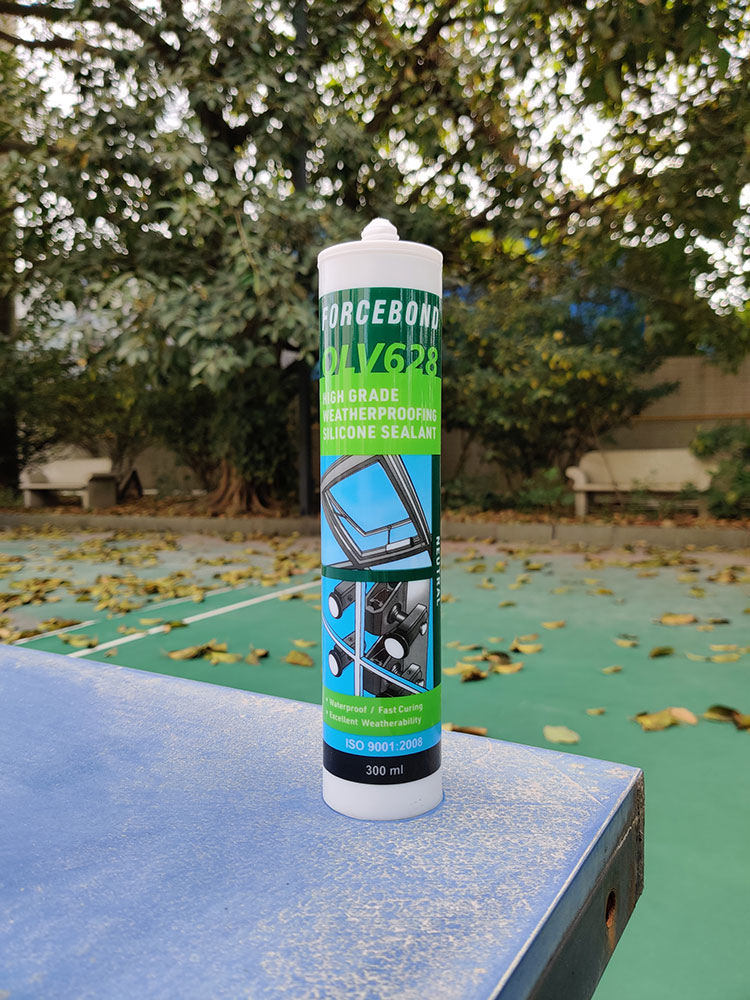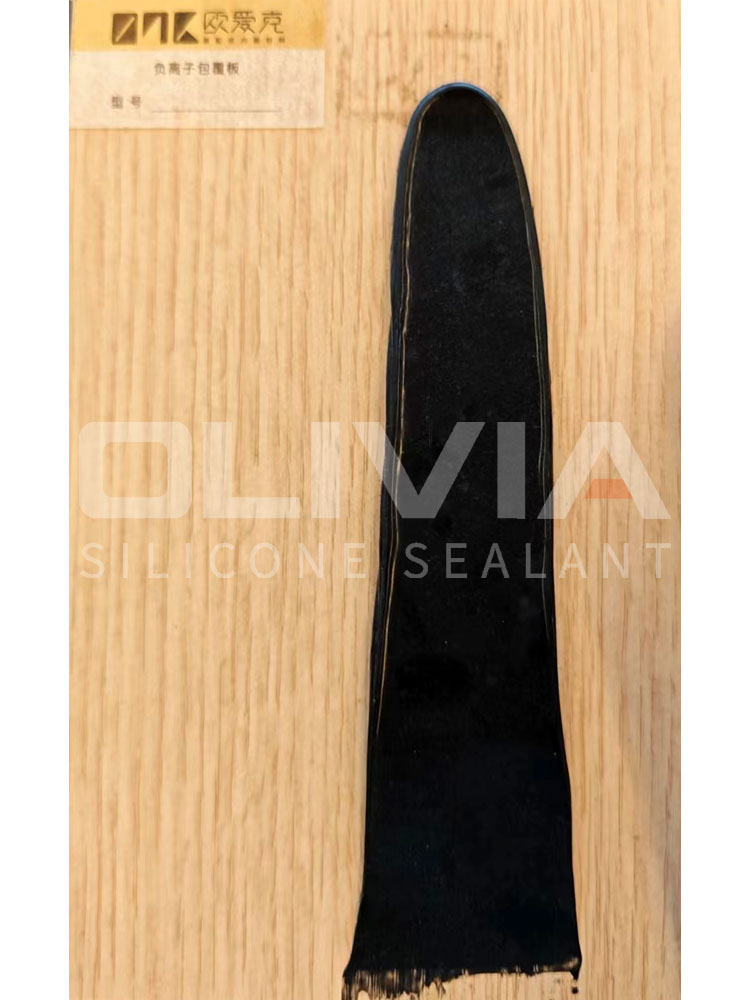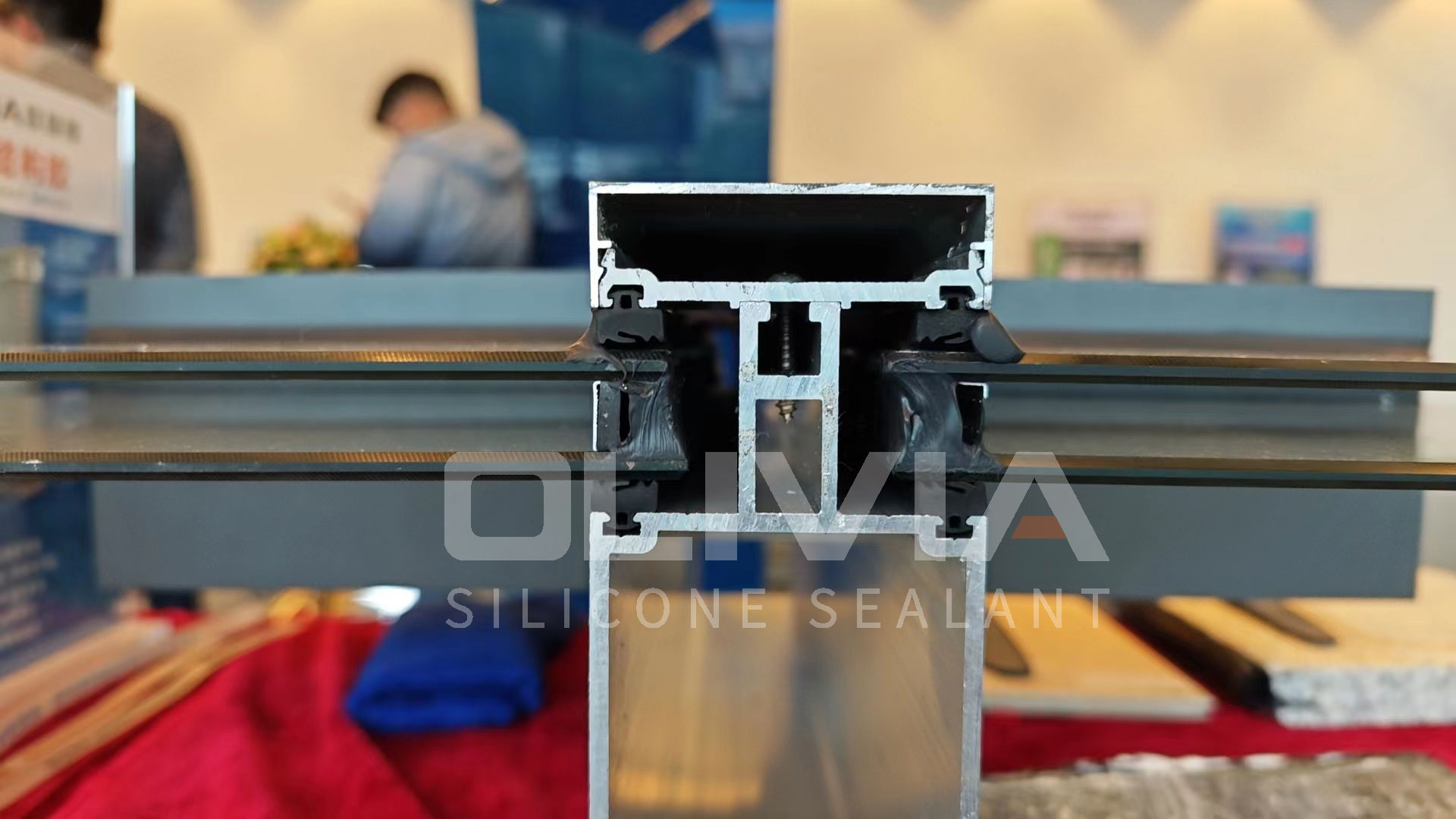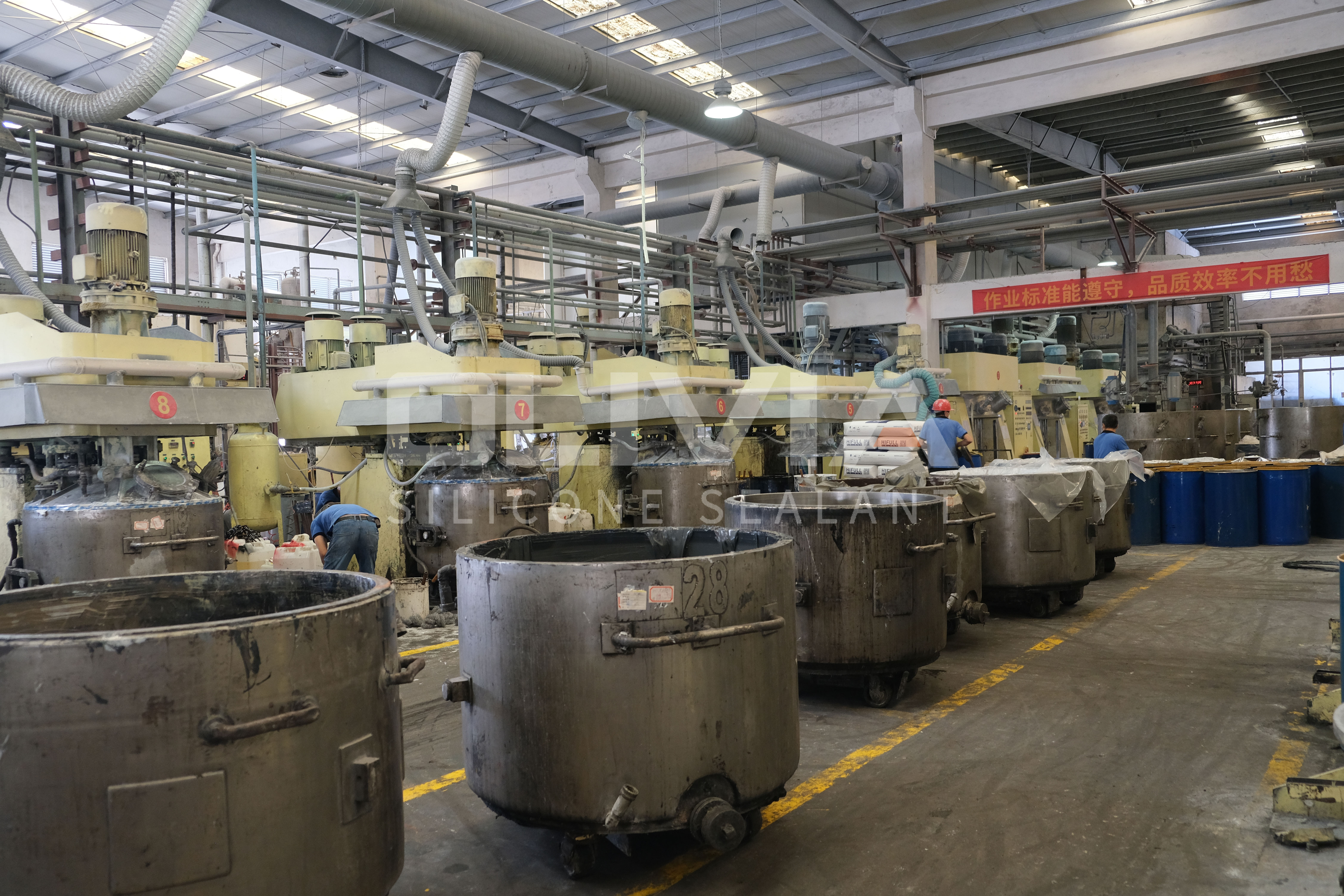No this won't be boring, honest-particularly if you love stretchy rubber things. If you read on, you will find out almost everything you ever wanted to know about One-Part Silicone Sealants.
1) What they are
2) How to make them
3) Where to use them

Introduction
What is a one-part silicone sealant?
There are many types of chemically curing sealants-Silicone, Polyurethane and Polysulfide being the most well known. The name comes from the backbone of the molecules involved.
The silicone backbone being:
Si – O – Si - O – Si – O – Si
Modified silicone is a new technology (in the US at least) and actually means an organic backbone cured with silane chemistry. An example is alkoxysilane terminated polypropylene oxide.
All these chemistries can be either one part or two part which obviously relates to the number of parts you need to get the thing to cure. Therefore, one part simply means open the tube, cartridge or pail and your material will cure. Normally, these one-part systems react with the moisture in the air to become rubber.
So, a one-part silicone is a system that is stable in the tube until, on exposure to air, it cures to produce a silicone rubber.
Advantages
One part silicones have many unique advantages.
-When compounded correctly they are very stable and reliable with excellent adhesion and physical properties. A shelf life(the time you can leave it in the tube before you use it) of at least one year is normal with some formulations lasting for many years. Silicones also have unquestionably the best long-term performance. Their physical properties hardly change over time with no effect from UV exposure and, in addition, they exhibit excellent temperature stability exceeding that of other sealants by at least 50℃.
-One part silicones cure relatively rapidly, typically developing a skin within 5 to 10 minutes, becoming tack free within one hour and curing to an elastic rubber about 1/10 inch deep in less than a day. The surface has a nice rubbery feel.
-Since they can be made translucent which is an important feature in itself (translucent is the most used color), it is relatively easy to pigment them to any color.

Limitations
Silicones have two main limitations.
1) They cannot be painted by water base paint-it can be tricky with solvent base paint as well.
2) After curing, the sealant can release some of its silicone plasticizer which, when being used in a building expansion joint, can create unsightly stains along the edge of the joint.
Of course, due to the very nature of being a one part it is impossible to get a speedy deep section through cure because the system has to react with the air therefore curing from the top down. Getting a little more specific, silicones cannot be used as the sole seal in insulated glass windows because. Although they are excellent at keeping bulk liquid water out, water vapor passes relatively easily through the cured silicone rubber causing the IG units to fog.
Market Areas and Uses
One-part silicones are used just about anywhere and everywhere, including, to the dismay of some building owners, where the two limitations mentioned above cause problems.
Construction and DIY markets account for the major volume followed by automotive, industrial, electronics and aerospace. As with all sealants, the one part silicones' main function is to adhere and fill the gap between two similar or dissimilar substrates to prevent water or drafts coming through. Sometimes a formulation will hardly be changed other than to make it more flowable upon which it then becomes a coating. The best way to differentiate between a coating, adhesive and a sealant is simple. A sealant seals between two surfaces whereas a coating covers and protects just one while an adhesive extensively keeps two surfaces together. A sealant is most like an adhesive when it is used in structural glazing or insulated glazing, however, it still functions to seal the two substrates in addition to keeping them together.

Basic Chemistry
The silicone sealant in the uncured state normally looks like a thick paste or cream. On exposure to air, the reactive end groups of the silicone polymer hydrolyze (react with water) and then join with each other, releasing water and forming long polymer chains that continue to react with each other until eventually the paste turns into an impressive rubber. The reactive group on the end of the silicone polymer comes from the most important part of the formulation (excluding the polymer itself) namely the crosslinker. It is the crosslinker that gives the sealant its characteristic properties either directly such as odor and cure rate, or indirectly such as color, adhesion, etc. because of the other raw materials that may be used with specific crosslinker systems such as fillers and adhesion promotors. Selecting the right crosslinker is key to determining the final properties of the sealant.
Curing Types
There are several different curing systems.
1) Acetoxy (acidic vinegar smell)
2) Oxime
3) Alkoxy
4) Benzamide
5) Amine
6) Aminoxy
Oximes, alkoxies and benzamides (more widely used in Europe) are the so called neutral or non-acidic systems. The amines and aminoxy systems have an ammonia odor and are typically used more in automotive and industrial areas or specific outdoor construction applications.
Raw Materials
Formulations comprise several different components, some of which are optional, depending on the intended end use.
The only absolutely essential raw materials are reactive polymer and crosslinker. However, fillers, adhesion promoters, non reactive (plasticizing) polymer and catalysts are nearly always added. In addition, many other additives can be used such as color pastes, fungicides, flame-retardants, and heat stabilizers.
Basic Formulations
A typical oxime construction or DIY sealant formulation will look something like:
| % | ||
| Polydimethylsiloxane, OH terminated 50,000cps | 65.9 | Polymer |
| Polydimethylsiloxane, trimethylterminated,1000cps | 20 | Plasticizer |
| Methyltrioximinosilane | 5 | Crosslinker |
| Aminopropyltriethoxysilane | 1 | Adhesion promoter |
| 150 sq.m/g surface area fumed silica | 8 | Filler |
| Dibutyltin dilaurate | 0.1 | Catalyst |
| Total | 100 |
Physical Properties
Typical physical properties include:
| Elongation (%) | 550 |
| Tensile Strength(MPa) | 1.9 |
| Modulus at 100 Elongation (MPa) | 0.4 |
| Shore A Hardness | 22 |
| Skin Over Time (min) | 10 |
| Tack Free Time (min) | 60 |
| Scratch Time (min) | 120 |
| Through Cure (mm in 24 hours) | 2 |
Formulations using other crosslinkers will look similar perhaps differing in the crosslinker level, type of adhesion promoter and curing catalysts. Their physical properties will vary slightly unless chain extenders are involved. Some systems cannot be made easily unless a large amount of chalk filler is used. These kinds of formulations obviously cannot be produced in the clear or translucent type.
Developing Sealants
There are 3 stages to developing a new sealant.
1) Conception, production and testing in the lab-very small volumes
Here, the lab chemist has new ideas and typically starts with a hand batch of about 100 grams of sealant just to see how it cures and what kind of rubber is produced. Now there is a new machine available "The Hauschild Speed Mix" from FlackTek Inc. This specialized machine is ideal for mixing these small 100g batches in seconds while expelling air. This is important since it now allows the developer to actually test the physical properties of these small batches. Fumed silica or other fillers such as precipitated chalks can be mixed into the silicone in about 8 seconds. De-airing takes about 20-25 seconds. The machine works by way of a dual asymmetric centrifuge mechanism which basically uses the particles themselves as their own mixing arms. The maximum mix size is 100 grams and several different cup types are available including disposable, which means absolutely no cleaning.
Key in the formulation process is not just the kinds of ingredients, but also the order of addition and mix times. Naturally the exclusion or removal of air is important to allow the product to have a shelf life, since air bubbles contain moisture which will then cause the sealant to cure from within.
Once the chemist has obtained the kind of sealant that is required for his particular application scales up to a 1 quart planetary mixer which can produce about 3-4 small 110 ml (3oz) tubes. This is sufficient material for initial shelf life testing and adhesion test plus any other special requirements.
He then may go to a 1 or 2 gallon machine to produce 8-12 10 oz tubes for more in depth testing and customer sampling. The sealant is extruded from the pot through a metal cylinder into the cartridge which fits over the packaging cylinder. Following these tests, he is ready for scale up.
2) Scale-up and fine tuning-medium volumes
In the scale up, the lab formulation is now produced on a larger machine typically in the range of 100-200kg or about a drum. This step has two main purposes
a) to see if there are any significant changes between the 4 lb size and this larger size which can result from mixing and dispersion rates, reaction rates and different amounts of sheer in the mix, and
b) to produce enough material to sample prospective customers and to get some real on-the-job feed back.
This 50 gallon machine is also very useful for industrial products when low volumes or special colors are required and only about one drum of each type needs to be produced at a time.
There are several types of mixing machines. The two most commonly used are planetary mixers (as shown above) and high-speed dispersers. A planetary is good for higher viscosity mixes whereas a disperser performs better particularly in lower viscosity flowable systems. In typical construction sealants, either machine can be used so long as one pays attention to mixing time and potential heat generation of a high speed disperser.
3) Full scale production quantities
The final production, which may be batch or continuous, hopefully simply reproduces the final formulation from the scale up step. Usually, a relatively small amount (2 or 3 batches or 1-2 hours of continuous) of material is produced first in the production equipment and checked before normal production ensues.

Testing -What and How to Test.
What
Physical Properties-Elongation, Tensile Strength and Modulus
Adhesion to appropriate substrate
Shelf Life-both accelerated and at room temperature
Cure Rates-Skin over time, Tack free time, Scratch time and Through cure, Colors Temperature Stability or stability in various fluids such as oil
In addition, other key properties are checked or observed: consistency, low odor, corrosivity and general appearance.
How
A sheet of sealant is drawn out and left to cure for a week. A special dumb bell is then cut out and put into a Tensile Tester to measure physical properties such as elongation, modulus and tensile strength. They are also used to measure adhesion/cohesion forces on specially prepared samples. Simple yes-no adhesion tests are performed by pulling at beads of material cured onto the substrates in question.
A Shore-A meter measures the hardness of the rubber. This device looks like a weight and a gauge with a point pressing into the cured sample. The more the point penetrates the rubber, the softer the rubber and the lower the value. A typical construction sealant will be in the 15-35 range.
Skin over times, tack free times and other special skin measurements are either performed with the finger or with plastic sheets with weights. The time before the plastic can be pulled away cleanly is measured.
For shelf life, tubes of sealant are aged either at room temperature(which naturally takes 1 year to prove a 1 year shelf life) or at elevated temperatures, of typically 50℃ for 1,3,5,7 weeks etc. Following the aging process (the tube allowed to cool in the accelerated case), material is extruded from the tube and drawn into a sheet where it is allowed to cure. The physical properties of the rubber formed in these sheets are tested as before. These properties are then compared to those of freshly compounded materials to determine the appropriate shelf life.
Specific detailed explanation of most tests required can be found in the ASTM handbook.


Some Final Tips
One-part silicones are the highest quality sealants available. They do have limitations and if specific requirements are demanded they may be developed specially.
It is key to make sure that all the raw materials are as dry as possible, the formulation is stable and that air is removed in the production process.
Developing and testing is basically the same process for any one part sealant regardless of the type-justmake sure you have checked every possible property before you start making production quantities and that you have a clear understanding of the needs of the application.
Depending on the application requirements, the correct cure chemistry can be selected. For example, if a silicone is selected and odor, corrosion and adhesion are not considered important but a low cost is needed, then the acetoxy is the way to go. However, if metal parts that may be corroded are involved or special adhesion to plastic is required in a unique glossy color then you need an oxime.
[1] Dale Flackett. Silicon Compounds: Silanes and Silicones [M]. Gelest Inc: 433-439
* Photo from OLIVIA Silicone Sealant
Post time: Mar-31-2024







